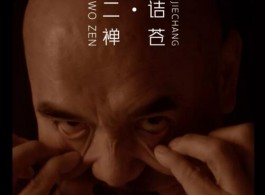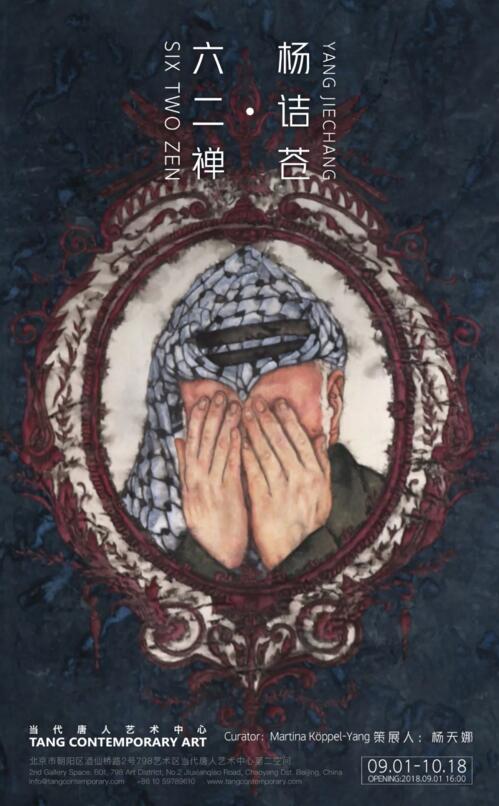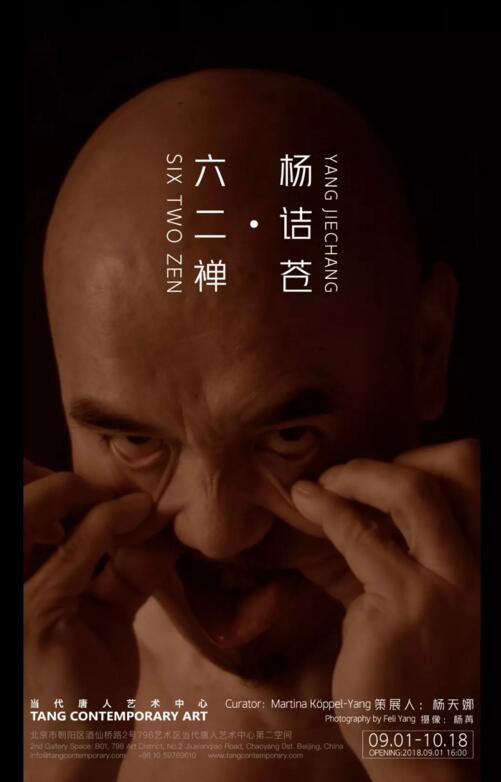Six Two Zen
Tang Contemporary Art
Tang Contemporary Art is proud to announce the opening of Yang Jiecang’s solo exhibition “Six Two Zen” on September 1, 2018, in the 2nd space of Beijing. Curated by Martina Köppel-Yang, this exhibition will present a video work Six Two Zen and three distinctly different ensembles of works created during the last fifteen years: Scroll of Secret Merit (2004) and Underground Flowers (2004), Tale of the 11th Dayseries and Stranger than Paradise (2010-2018), and finally These are Still Flowers (2012 -2018).
Six Two Zen is the title of a video loop showing the artist making a terrible face like that of the revengeful God of Thunder, Leigong. In many of his works Yang proposes this kind of duality-transcending position to the viewer: there is no traditional or contemporary, no Eastern or Western, no political-correct or subversive,no beautiful or ugly, no good or bad; and, in this sense, the artist considers Leigong’s terrible grimace an auspicious sign.The awareness of the existence of a position in between, an alternative view going beyond a dialectical perception of the world, marked Yang Jiechang’s way of thinking from very early on and is his key strategy to relate to reality and life in a deeper and more immediate way.
Scroll of Secret Merit, a four-panel ink painting, shows bones drifting apart in some kind of vacuum. The artist doesn’t give any further information of the circumstances. Plain and prosaic, the bones are ghostly reminders of catastrophe and decay, strange and yet familiar, they appear like eternal friends. Even though they clearly speak of death, these drifting bones seem alive. In Underground Flowers, life-size porcelainbones are painted with elegant flowers. Death is part of life, and just a stage in a perpetual circuit. These are not Western vanitas- representations, evoking the transience of life and the futility of pleasure, but depictions of defiant specters, persisting in time, accepting death but not defeat. History is full of this kind of specters and history and its specters is an important subject in Yang Jiechang’s oeuvre.
The paintings from the Stranger than Paradise and Tale of the 11th Dayseries, are multi-panel panoramas in the traditional meticulous colour painting technique and depict some kind of dubious paradise. The depicted panoramas rely on classical models stemming from the canon of traditional Chinese landscape painting, thus suggesting a kind of universal landscape. Yang’s image of a land where impartial communication and action is possible, reminds us on a globalized world, yet one based on equality, on mutual respect and compassion. Then Tale of the 11th Day – the title is alluding to Boccaccio’s Il Decamerone – would be the allegory of such a utopia. However, similar to Boccaccio’s Decamerone, which is a collection of stories told in times of the Black Death, Yang’s Tale of the 11th Day reminds us that even though all beings are interconnected in an essential unity of existence, harmony still is based on power play.
In Yang Jiechang’s oeuvre the evil not only is an aesthetic construct but also a field of research. In the exhibition the series These are still Flowers shows his probing into this direction. As Karl Heinz Bohrer’s reflections on the aesthetic evil, “The aesthetic evil represents some kind of utopian borderline that has to be transgressed.” These are still Flowers is a collection of copies of flower paintings done by young Adolf Hitler before 1913. Each set consists of an authentic copy and then a free interpretation in the style of Northern Song Dynasty Emperor Huizong(1100 —1125 AD), and not enough, some of the sets are complemented by a three-dimensional version in porcelain, which actually is a copy of Yang Jiechang’s copy executed by an artisan. Yang Jiechang approaches both personages from the angle of art and culture through the method of copying. Doing so he eschews historical judgment as a sole and first approach to these historically problematic figures. Yang Jiechang’s choice of this kind of model is an extreme and a courageous one.The field he probes into is overly charged with negative sentiments, moral convictions and political positions, and raises questions that still cannot be discussed impartially today. Confronted with this kind of dilemma Yang Jiechang states: “If you choose such an extreme position, then you choose the freedom of art.”





